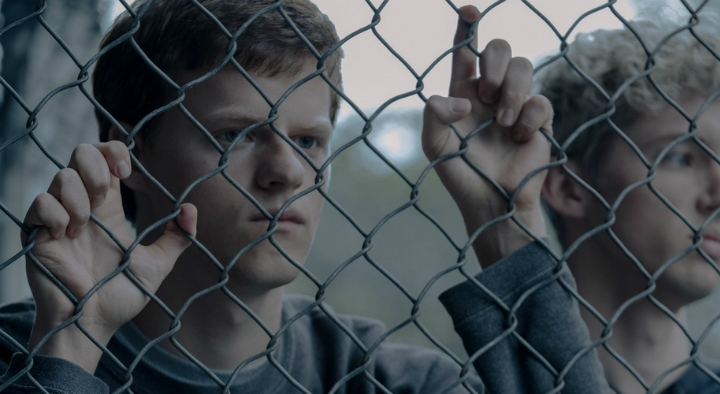
Boy Erased is a coming-of-age drama that doubles as a horror story. Director Joel Edgerton recruits one of Hollywood’s best young actors to share the real-life account of a teenager undergoing gay conversion therapy. Based on the memoir by Garrard Conley, and featuring two major stars, Nicole Kidman and Russell Crowe, Boy Erased offers moviegoers a look at a malicious practice which has yet to be outlawed in most of the United States.
Jared Eamons (Lucas Hedges) is a teenager who lives in Arizona with his mother Nancy (Nicole Kidman) and Baptist minister father Marshall (Russell Crowe). It’s clear that both parents love Jared with all their hearts, but Marshall and Nancy also love God. Their faith is tested when they discover Jared may be gay. To be clear, Jared is gay, and he will be until the day he dies. But his parents and their church’s deepest thinkers believe that being gay is something you can exercise from poor confused souls.
They ship Jared off for 12 days at the Love in Action facility, a place that specializes in gay conversion therapy. It’s operated by Victor Sykes (Joel Edgerton), a religious blowhard that uses fear, anger, and hostility to scare kids straight. The film keeps shifting back in time to the incidents leading up to Love in Action, giving us a closer look at the misguided actions that put a young man in such a dangerous place.
This film sinks or swims on the back of Hedges’ performance. He’s in almost every scene, and if we don’t connect with his character Jared, this movie becomes one long slough. So, the understated way that Edgerton approaches the material is an odd choice. Much of what’s going on with the character remains buried beneath layers of silence and oppression. We see Jared endure many conflicts, but we aren’t always privy to how they affect him. Part of this is Edgerton respecting the audience’s intelligence, letting them absorb each scene and draw their own conclusion. The other part of this is the character working through his own feelings. The last thing a kid in Jared’s position wants is for their family, friends, and church to demonize them. But Jared’s silence often makes him unknowable.
The supporting characters don’t have huge roles, but it’s their emotional arcs in relation to Jared that make this film resonate. We don’t get much from Jared, who in his long silences finds the strength not to buckle. The script relies on the slow turn of Jared’s prideful father, his meek mother, and the tragic stories of the teens locked away with inside Love in Action to really tangle itself up in our heartstrings. But it’s Kidman’s colourful, big-haired mom Nancy who baits viewers into letting the tears flow.
Much like Jared, we never know what’s going on below the hood of Edgerton’s Victor Sykes. I found myself placing my own emotional baggage on the character, projecting onto Victor the motivations I’ve often seen from slippery men like him. He has the telltale signs of a snake oil salesman even if the film doesn’t confirm my biases. Does he believe he’s doing God’s work, is he on a power trip, or running a religious scam for the money? My gut reaction is that people who protest homosexuality so fiercely often harbour doubts about their own sexuality.
Edgerton’s showy performance may take centre stage, but it’s his subtlety behind the camera that keeps the picture humming. Boy Erased is a dark movie – aside from the disturbing subject matter. Edgerton and his cinematographer Eduard Grau, capture much of the film at night and in dimly lit rooms with the characters draped in shadows. These shots create visual manifestations of the darkness Jared finds himself lost in, and the bleakness and loss of hope that exists in one’s life before finding enlightenment.
In one ominous shot, mother and son sit side by side, facing a wall with a dividing line slicing between them from floor to ceiling. Nancy sits on the side of darkness while Jared, in a moment of self-reflection, sits illuminated. In another shot, an American flag hangs over the podium where teens give their conversion therapy confessionals. The image begs someone to yell out, “Home of the free.” These subtle queues affect viewers on a gut-level, and the on-the-nose imagery add a layer of visual flair that keeps viewers engaged. They also show why Edgerton is a director worth keeping an eye on.
Boy Erased is a harrowing two-hour watch, and the film’s powerful message stays with you long after the credits roll. What’s most intriguing here is the notion that some of the people who inflict harm in this film aren’t terrible people; they’re horribly misinformed and eventually open to change. Being misinformed doesn’t make their actions less atrocious, but it does show us how over time, even bigots may develop empathy. In 2018, oppressive organizations like Love in Action endure, and they’re still trying to make the LGBTQ community disappear. But if smart filmmakers keep highlighting the issue with films like Boy Erased, and The Miseducation of Cameron Post, gay conversion therapy centres will do the vanishing.
- Release Date: 11/09/2018



